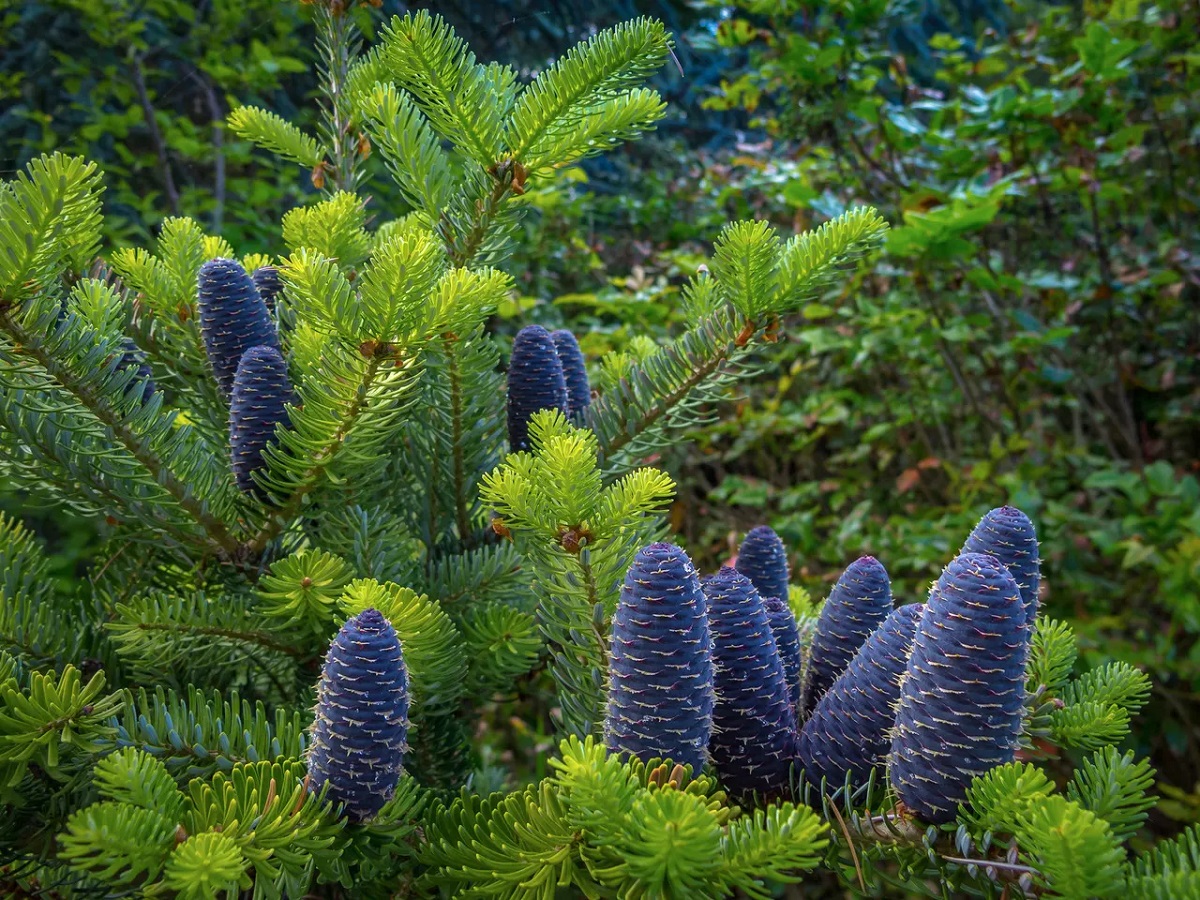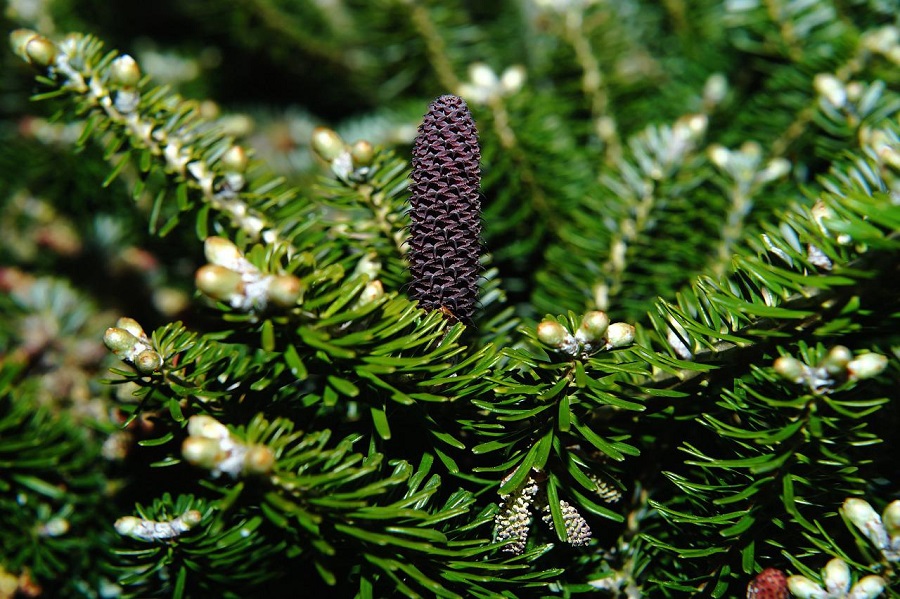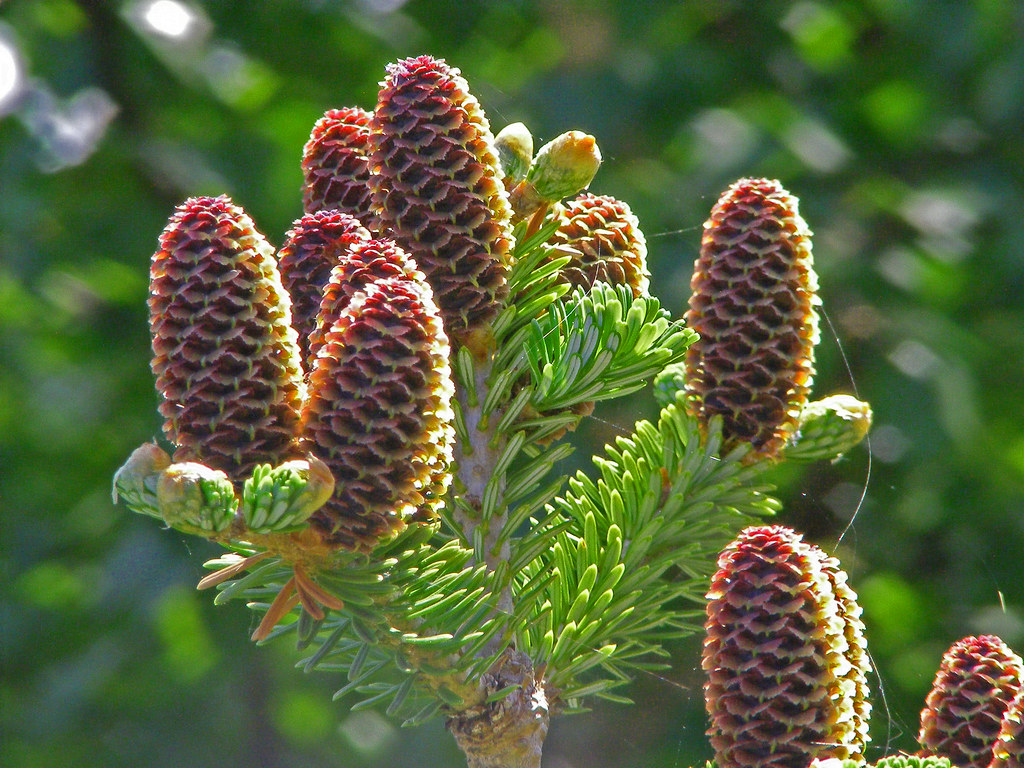Korean Fir Tree - Care, Cultivation, Varieties and Problems
Korean fir is a beautiful species from the pinaceae family. It grows naturally, although it's becoming a popular tree in home yards, where it's much shorter. Growing a Korean fir is not complicated, and the plant is not very demanding. But one has to make sure to follow basic care rules – you can learn them from the text below. Find out whether Korean fir is the right tree for you.

Korean fir – what kind of tree is it?
Korean fir (Abies koreana) is one of the most popular species from the family of pinaceae trees. The name implies the origins of this plant. The Korean Peninsula is its natural habitat. Korean fir has been a frequent addition in home yards – all over the world.
In its natural habitat, Korean fir is quite tall, as it can reach up to 12 meters in height. It’s a bit different if being grown in a garden. In this case, its normal height is typically 5-7 meters, which is impressive anyway.
The appearance of Korean fir is very characteristic. Its shape is slightly conical, and the tree develops many branches. What differentiates it from other species are very short needles and large purple cones. They beautifully decorate the tree.

What are the best conditions for a Korean fir?
Abies koreana is not very demanding as for the soil in which it grows. The ground can be sandy and acidic. It’s perfect if the soil is fertile – this way, you can expect a quick growth rate of the tree. The only exception in this case is alkaline soil – Korean fir doesn’t tolerate it.
As for the location in the garden, half-shade is the best spot. Although Korean fir is resistant to droughts, make sure the soil stays relatively moist.
Korean fir – noteworthy varieties
Just like many other conifers, Korean fir has several varieties. Thanks to this, one can pick the best species to match other plants in the garden. Take a look at the most popular varieties:
- Aurea – the needles have a yellow tint, the tree is characterized by a slow growth rate,
- Green Carpet – it’s a trailing variety which grows wide rather than tall,
- Blauer Pfiff - the needles of this tree have a bluish glow,
- Verdener Dom – a slim fir with intense green needles,
- Blue Emperor – a variety of a dense habit with blue-green needles,
- Brevifolia – a dwarf Korean fir, perfect for rock gardens,
- Golden Glow – a variety with slightly yellow needles with a dense, regular habit,
- Kohout’s Icebreaker – one of the latest Korean fir varieties, a slow-growing tree which is grafted onto a trunk,
- Pinocchio – another dwarf Korean fir, also grafted onto a trunk,
- Kórnik – a Polish Korean fir variety, it grows really slow and is highly resistant to strong frosts and pollution,
- Tundra – a miniature variety of a globular habit,
- Silberlocke – an exceptional variety with slightly twisted needles.

Does Korean fir require trimming?
The tree doesn’t need regular trimming. But you can do it if you want to change its shape. If you decide to prune the plant, you should stick to certain recommended dates. The best time for trimming a Korean fir is April or June. That’s when the tree can tolerate it well.
Korean fir – mulching and fertilizing
Although Korean fir is not difficult to cultivate and doesn’t need a lot of care, mulching is the absolute basis. It’s done to retain moisture in the soil, so the tree doesn’t need frequent watering.
Fertilizing of the soil in which Korean fir grows is another important issue. It’s not difficult, as it has to be done only in spring, when the garden wakes up to life. You can use a special multi-ingredient product which can be found in any gardening store.

Korean fir – seedlings and propagation
Growing a Korean fir is not tough or difficult. But propagating the plant is quite a different issue. In this case, experienced gardeners use cuttings – but they tend to take root either slowly or incorrectly. Growing a Korean fir from seed is a much better option. It should be done in early spring.
- the seeds are retrieved in fall and left to chill – so-called stratification,
- in spring, they need to be soaked before planting.
How to stratify Korean fir seeds?
Stratification of Korean fir seeds is quite an easy procedure. Simply prepare some cotton pads soaked in water and put the seeds on top of them. Fold each pad in half, put it in a ziplock bag and put it in a fridge.

What are the common diseases of Korean fir?
Korean fir is quite a durable tree. Regardless, it can be attacked by various diseases. Typically, they are fungal. In this case, the most common issues are:
- tree rust,
- twig blight,
- botrytis.
Korean fir – pests
Apart from diseases, Korean fir can also be attacked by various pests. Aphids are the most common ones. These are not the only insects, though. Spider mites might appear in between the needles. In both cases, you can get rid of the problem using natural remedies. A brew made of onions or garlic, or nettle slurry are good options.

📍 When to plant Korean fir?
Korean fir is typically planted in gardens between August and September. If you missed this period, you can also plant the tree in October, provided that there are no frosts. Korean fir can be planted in a container as well – in this case, there's no particular recommended date for planting.
📍 Why is my Korean fir turning yellow?
Korean firs turn yellow mostly because of lack of water – it's the most common reason, but not the only one. Needles turning yellow can be a result of damaged branches, frost, or pests.
📍 What is the growth rate of Korean fir?
Korean fir is a fast-growing tree, although a lot depends on the variety. Trees of this type usually get 1 to 2 meters tall after 10 years. The maximal height is reached after 50-60 years.
📍 Korean fir – what's the best location for the plant?
Korean fir can grow practically everywhere regardless of the soil conditions. You can plant it in a fertile or sandy ground. Alkaline soils are the only exception.
Featured articles




